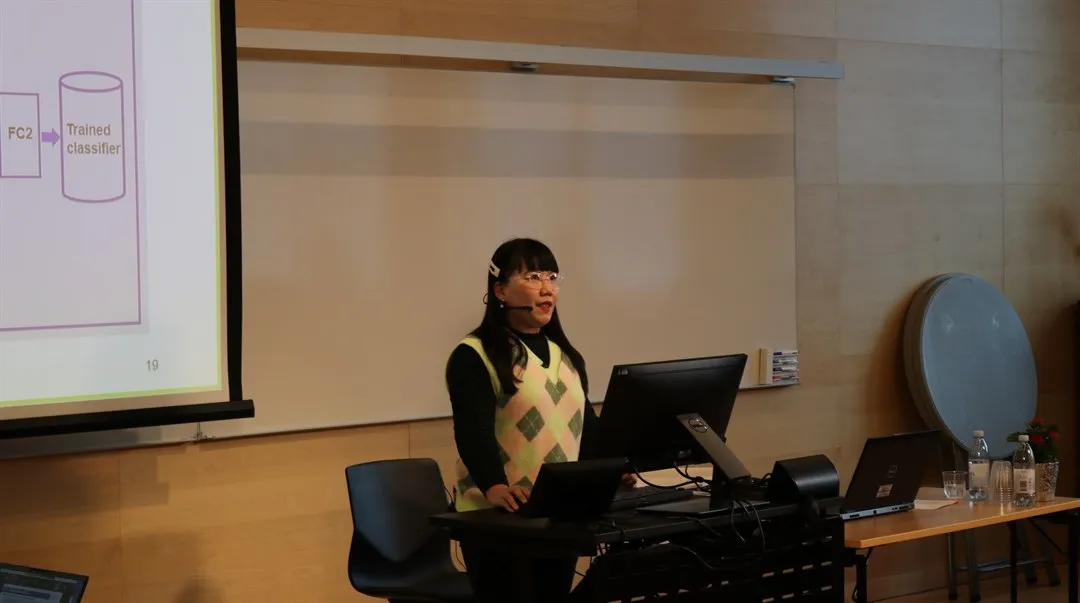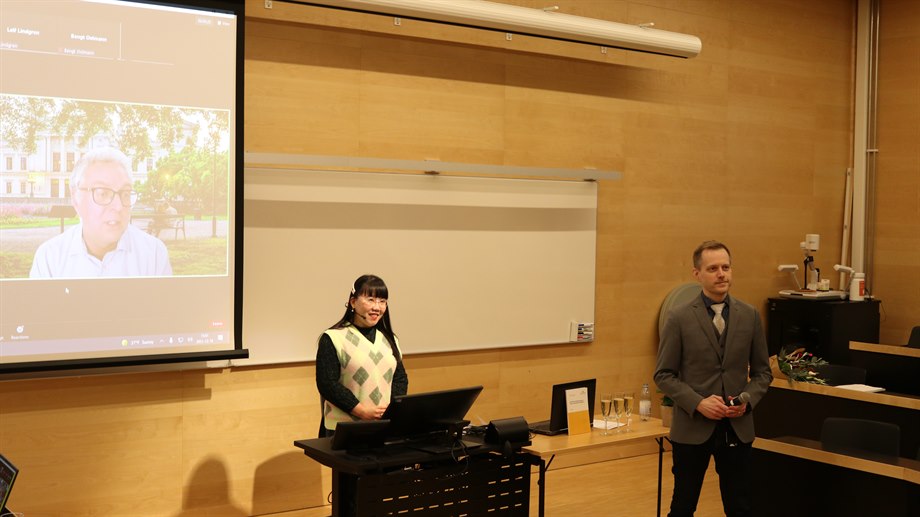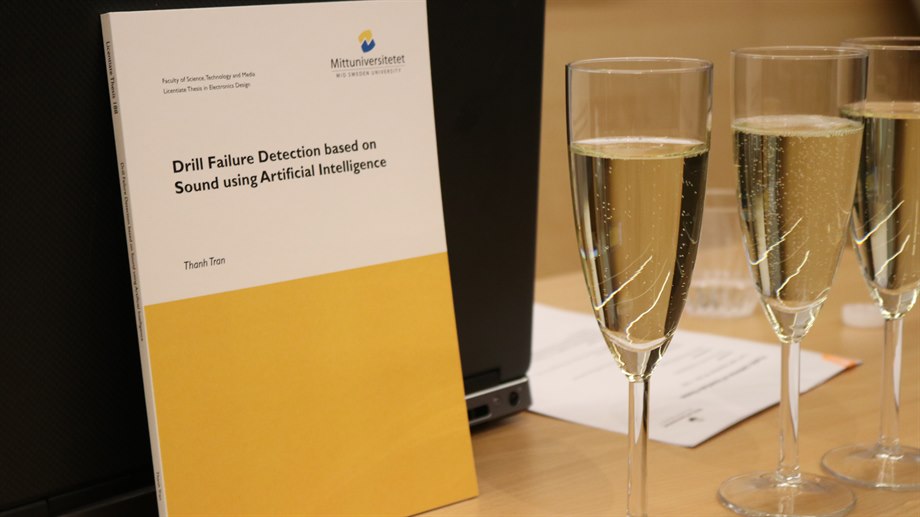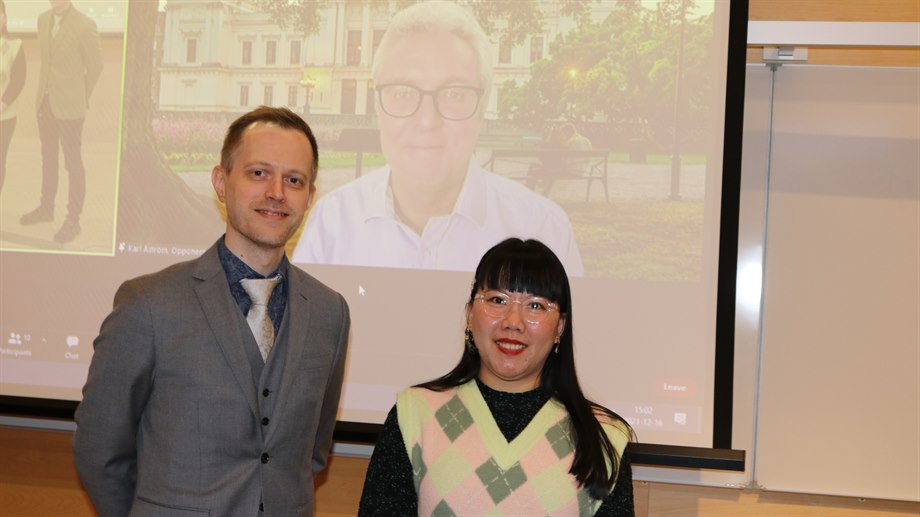av
Thanh Tran presented her licentiate thesis
On December 16, PhD student Thanh Tran defended her licentiate thesis Drill Failure Detection based on Sound using Artificial Intelligence. Congratulations to your licentiate degree Thanh!
Opponent was Professor Karl Åström, Lund University. Main supervisor was Associate Professor Jan Lundgren and co-supervisor Associate Professor Sebastian Bader.
Thanh presented her work within an acoustic sensor setup for AI monitoring systems.
Abstract
In industry, it is crucial to be able to detect damage or abnormal behavior in machines. A machine's downtime can be minimized by detecting and repairing faulty components of the machine as early as possible. It is, however, economically inefficient and labor-intensive to detect machine fault sounds manual. In comparison with manual machine failure detection, automatic failure detection systems can reduce operating and personnel costs. Although prior research has identified many methods to detect failures in drill machines using vibration or sound signals, this field still remains many challenges. Most previous research using machine learning techniques has been based on features that are extracted manually from the raw sound signals and classified using conventional classifiers (SVM, Gaussian mixture model, etc.). However, manual extraction and selection of features may be tedious for researchers, and their choices may be biased because it is difficult to identify which features are good and contain an essential description of sounds for classification. Recent studies have used LSTM, end-to-end 1D CNN, and 2D CNN as classifiers for classification, but these have limited accuracy for machine failure detection. Besides, machine failure occurs very rarely in the data. Moreover, the sounds in the real-world dataset have complex waveforms and usually are a combination of noise and sound presented at the same time.
Given that drill failure detection is essential to apply in the industry to detect failures in machines, I felt compelled to propose a system that can detect anomalies in the drill machine effectively, especially for a small dataset. This thesis proposed modern artificial intelligence methods for the detection of drill failures using drill sounds provided by Valmet AB. Instead of using raw sound signals, the image representations of sound signals (Mel spectrograms and log-Mel spectrograms) were used as the input of my proposed models. For feature extraction, I proposed using deep learning 2-D convolutional neural networks (2D-CNN) to extract features from image representations of sound signals. To classify three classes in the dataset from Valmet AB (anomalous sounds, normal sounds, and irrelevant sounds), I proposed either using conventional machine learning classifiers (KNN, SVM, and linear discriminant) or a recurrent neural network (long short-term memory). For using conventional machine learning methods as classifiers, pre-trained VGG19 was used to extract features and neighborhood component analysis (NCA) as the feature selection. For using long short-term memory (LSTM), a small 2D-CNN was proposed to extract features and used an attention layer after LSTM to focus on the anomaly of the sound when the drill changes from normal to the broken state. Thus, my findings will allow readers to detect anomalies in drill machines better and develop a more cost-effective system that can be conducted well on a small dataset.
There is always background noise and acoustic noise in sounds, which affect the accuracy of the classification system. My hypothesis was that noise suppression methods would improve the sound classification application's accuracy. The result of my research is a sound separation method using short-time Fourier transform (STFT) frames with overlapped content. Unlike traditional STFT conversion, in which every sound is converted into one image, a different approach is taken. In contrast, splitting the signal into many STFT frames can improve the accuracy of model prediction by increasing the variability of the data. Images of these frames separated into clean and noisy ones are saved as images, and subsequently fed into a pre-trained CNN for classification. This enables the classifier to become robust to noise. The FSDNoisy18k dataset is chosen in order to demonstrate the efficiency of the proposed method. In experiments using the proposed approach, 94.14 percent of 21 classes were classified successfully, including 20 classes of sound events and a noisy class.









